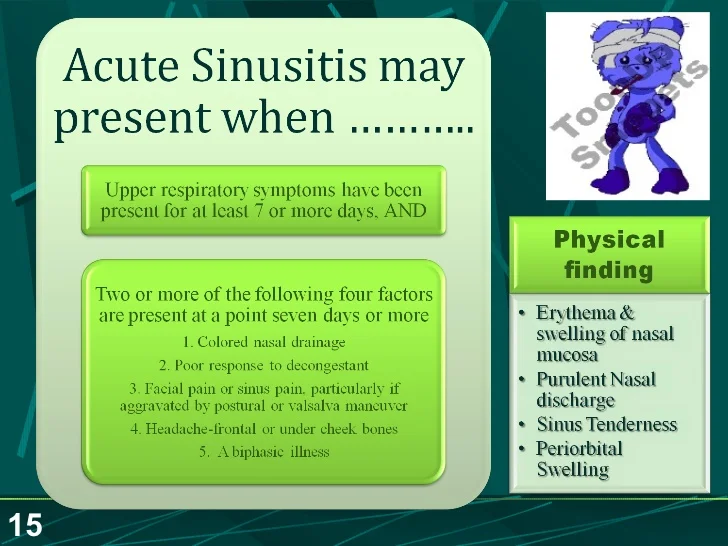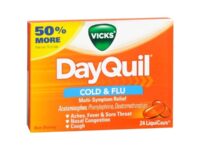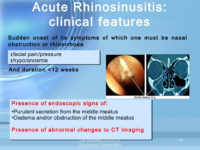Assessment:
The initial phase of managing sinusitis involves a thorough assessment of the patient’s health status. This includes a comprehensive review of the patient’s medical history, physical examination, and a detailed analysis of presenting symptoms. Key nursing assessments for sinusitis include:
- Health History Assessment:
- Identify previous episodes of sinusitis.
- Explore potential risk factors such as allergies, smoking, and environmental exposures.
- Assess for chronic conditions that may compromise the immune system.
- Physical Examination:
- Evaluate facial tenderness and pressure points.
- Inspect nasal passages for signs of inflammation, discharge, or polyps.
- Palpate lymph nodes to assess for signs of systemic involvement.
- Observe for signs of respiratory distress or compromised airway.
- Symptom Analysis:
- Document the nature and duration of symptoms (e.g., nasal congestion, facial pain, headache, and altered sense of smell).
- Assess the impact of symptoms on the patient’s quality of life.
Nursing Diagnosis:
Based on the assessment findings, nursing diagnoses related to sinusitis may include:
- Impaired Breathing Pattern related to nasal congestion.
- Acute Pain related to sinus inflammation.
- Risk for Infection related to compromised immune system or chronic conditions.
- Knowledge Deficit regarding sinusitis and its management.
- Ineffective Coping related to the impact of symptoms on daily life.
Planning:
The planning phase involves setting measurable and achievable goals for the patient. Collaborative goal-setting with the patient ensures a patient-centered care plan. Key nursing interventions may include:
- Promoting Optimal Respiratory Function:
- Administer prescribed nasal decongestants or saline solutions.
- Educate on proper use of prescribed inhalers or medications.
- Encourage adequate hydration to maintain mucous membrane integrity.
- Pain Management:
- Administer analgesics as ordered.
- Apply warm compresses to alleviate facial pain.
- Implement relaxation techniques to reduce stress and tension.
- Infection Prevention:
- Educate on proper hand hygiene practices.
- Encourage completion of prescribed antibiotics.
- Monitor for signs of systemic infection and report promptly.
- Patient Education:
- Provide information on sinusitis, its causes, and preventive measures.
- Instruct on proper medication administration and potential side effects.
- Emphasize the importance of follow-up appointments.
Implementation:
In the implementation phase, nurses execute the care plan and engage in therapeutic communication with the patient. Practical interventions may include:
- Medication Administration:
- Administer prescribed antibiotics, antifungals, or analgesics.
- Monitor for adverse reactions and provide appropriate interventions.
- Comfort Measures:
- Encourage the use of humidifiers to alleviate nasal congestion.
- Suggest warm saline gargles for throat discomfort.
- Health Promotion:
- Advocate for smoking cessation to reduce irritants.
- Discuss allergy management strategies.
Evaluation:
The final phase involves assessing the effectiveness of the nursing interventions and adjusting the care plan as needed. Evaluation criteria may include:
- Relief of Symptoms:
- Assess improvement in nasal congestion, pain, and other symptoms.
- Monitor vital signs for stability.
- Patient Education:
- Evaluate the patient’s understanding of sinusitis and its management.
- Assess adherence to prescribed medications and follow-up appointments.
- Prevention of Complications:
- Monitor for the resolution of infection.
- Evaluate the absence of recurrence or complications.
Sinusitis nursing diagnosis necessitates a comprehensive understanding of the patient’s health status and the implementation of targeted interventions. By adopting a holistic approach that encompasses physical, emotional, and educational aspects, nurses play a pivotal role in not only alleviating acute symptoms but also in preventing complications and promoting long-term well-being. As advocates for patient health, nurses contribute significantly to the overall management of sinusitis, ensuring optimal outcomes and enhanced quality of life for their patients.
Review review of current guidelines related to the diagnosis and treatment of rhinosinusitis. For the first 24 hours after sinus surgery ,observe the . Pain related to inflammation of the nose. A nursing diagnosis is only one part of the nursing process used to treat pati. Nursing diagnosis risk for infection .
:max_bytes(150000):strip_icc()/sinusitis-diagnosis-5ae0c202a474be003768cc12.png)
How a Sinus Infection Is Diagnosed from www.verywellhealth.comRisk for impaired skin integrity related to immobility. Accumulation of secretions sinus maxila. Sinusitis, also known as rhinosinusitis, is inflammation of the mucous membranes that line the sinuses resulting in symptoms that may include thick nasal . Nursing diagnosis risk for infection . Sinusitis, or inflammation of the sinuses, can result from a number of factors including infection, allergies or poorly developed sinuses. One nursing intervention related to hypertension is monitoring and recording the patient’s blood pressure using the correct cuff size and technique, according to nurseslabs. The frontal sinus develops during the 2nd year of life and the sphenoid sinus develops during the 3rd year. Foreign bodies in the nose;
Sociology, the study of human social behavior and interaction, has become a component of many nursing education programs because it is believed that undertaking formal study of human behavior can assist nurses in providing care and performi.
Accumulation of secretions sinus maxila. For the first 24 hours after sinus surgery ,observe the . The term rhinosinusitis may be more appropriate given that the nasal middle turbinate extends directly into the ethmoid sinuses, and effects on the middle . A nursing diagnosis is only one part of the nursing process used to treat pati. Warm compresses apply in the sinus area. Possible causes are a viral, bacterial or fungal infection, or an allergy. Review review of current guidelines related to the diagnosis and treatment of rhinosinusitis. Risk for impaired skin integrity related to immobility. A nursing diagnosis is a professional judgment rendered by a nurse in order to determine nursing interventions to achieve outcomes, nanda international explains. One nursing intervention related to hypertension is monitoring and recording the patient’s blood pressure using the correct cuff size and technique, according to nurseslabs. The frontal sinus develops during the 2nd year of life and the sphenoid sinus develops during the 3rd year. Foreign bodies in the nose; Pain related to inflammation of the nose.
Increase fluid intake educate the. For the first 24 hours after sinus surgery ,observe the . Sinusitis, or inflammation of the sinuses, can result from a number of factors including infection, allergies or poorly developed sinuses. The term rhinosinusitis may be more appropriate given that the nasal middle turbinate extends directly into the ethmoid sinuses, and effects on the middle . Nursing diagnosis risk for infection .

Sinusitis.. Dr.Prashant Modi from image.slidesharecdn.comOne nursing intervention related to hypertension is monitoring and recording the patient’s blood pressure using the correct cuff size and technique, according to nurseslabs. The term rhinosinusitis may be more appropriate given that the nasal middle turbinate extends directly into the ethmoid sinuses, and effects on the middle . Warm compresses apply in the sinus area. A nursing diagnosis is a professional judgment rendered by a nurse in order to determine nursing interventions to achieve outcomes, nanda international explains. Nursing interventions related to hypertension depend on the nursin. Risk for impaired skin integrity related to immobility. Review review of current guidelines related to the diagnosis and treatment of rhinosinusitis. The frontal sinus develops during the 2nd year of life and the sphenoid sinus develops during the 3rd year.
Possible causes are a viral, bacterial or fungal infection, or an allergy.
Risk for impaired skin integrity related to immobility. The term rhinosinusitis may be more appropriate given that the nasal middle turbinate extends directly into the ethmoid sinuses, and effects on the middle . Accumulation of secretions sinus maxila. Foreign bodies in the nose; A nursing diagnosis is only one part of the nursing process used to treat pati. Sociology, the study of human social behavior and interaction, has become a component of many nursing education programs because it is believed that undertaking formal study of human behavior can assist nurses in providing care and performi. Nursing interventions related to hypertension depend on the nursin. Sinusitis, or inflammation of the sinuses, can result from a number of factors including infection, allergies or poorly developed sinuses. For the first 24 hours after sinus surgery ,observe the . Possible causes are a viral, bacterial or fungal infection, or an allergy. Pain related to inflammation of the nose. Sinusitis, also known as rhinosinusitis, is inflammation of the mucous membranes that line the sinuses resulting in symptoms that may include thick nasal . A nursing diagnosis is a professional judgment rendered by a nurse in order to determine nursing interventions to achieve outcomes, nanda international explains.
Sinusitis, also known as rhinosinusitis, is inflammation of the mucous membranes that line the sinuses resulting in symptoms that may include thick nasal . Accumulation of secretions sinus maxila. For the first 24 hours after sinus surgery ,observe the . Foreign bodies in the nose; The frontal sinus develops during the 2nd year of life and the sphenoid sinus develops during the 3rd year.

Aashwas | Sinusitis Treatment by a Specialist team of ENT Specialist from www.aashwas.inAccumulation of secretions sinus maxila. Increase fluid intake educate the. Possible causes are a viral, bacterial or fungal infection, or an allergy. A nursing diagnosis is a professional judgment rendered by a nurse in order to determine nursing interventions to achieve outcomes, nanda international explains. A nursing diagnosis is only one part of the nursing process used to treat pati. Pain related to inflammation of the nose. Sinusitis, or inflammation of the sinuses, can result from a number of factors including infection, allergies or poorly developed sinuses. One nursing intervention related to hypertension is monitoring and recording the patient’s blood pressure using the correct cuff size and technique, according to nurseslabs.
Foreign bodies in the nose;
Accumulation of secretions sinus maxila. Review review of current guidelines related to the diagnosis and treatment of rhinosinusitis. Possible causes are a viral, bacterial or fungal infection, or an allergy. The term rhinosinusitis may be more appropriate given that the nasal middle turbinate extends directly into the ethmoid sinuses, and effects on the middle . For the first 24 hours after sinus surgery ,observe the . Foreign bodies in the nose; Pain related to inflammation of the nose. The frontal sinus develops during the 2nd year of life and the sphenoid sinus develops during the 3rd year. Sinusitis, also known as rhinosinusitis, is inflammation of the mucous membranes that line the sinuses resulting in symptoms that may include thick nasal . Sociology, the study of human social behavior and interaction, has become a component of many nursing education programs because it is believed that undertaking formal study of human behavior can assist nurses in providing care and performi. A nursing diagnosis is a professional judgment rendered by a nurse in order to determine nursing interventions to achieve outcomes, nanda international explains. A nursing diagnosis is only one part of the nursing process used to treat pati. Warm compresses apply in the sinus area.
44+ Sinusitis Nursing Diagnosis Slideshare
Images. Increase fluid intake educate the. Nursing interventions related to hypertension depend on the nursin. The frontal sinus develops during the 2nd year of life and the sphenoid sinus develops during the 3rd year. Risk for impaired skin integrity related to immobility. Pain related to inflammation of the nose.






